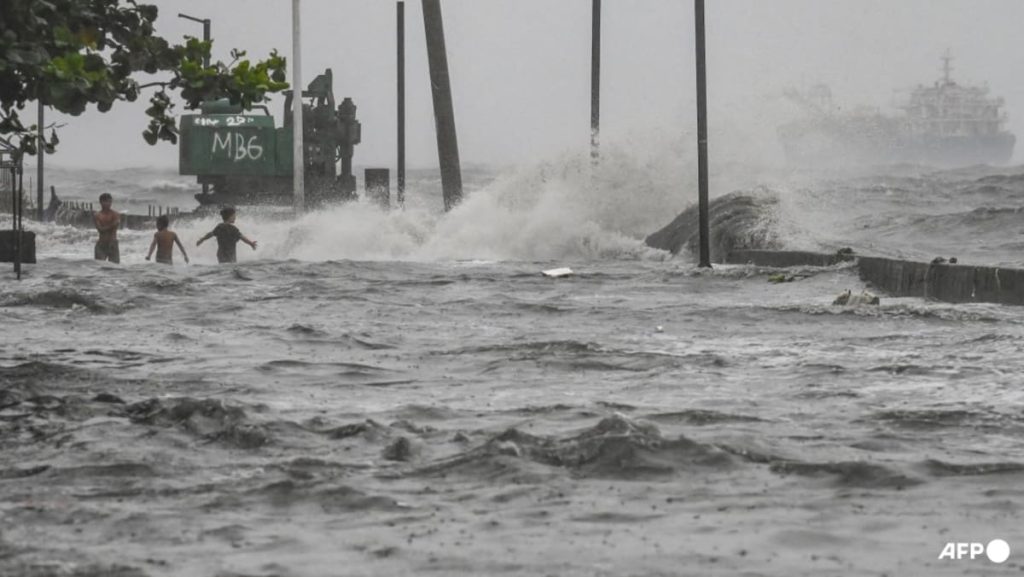Tropical Storm Yagi, also known locally as Enteng, hit the coastal waters of Vinzons town in Camarines Norte province with sustained winds of up to 75kmh and gusts of up to 90kmh. The storm was moving northwestward at a speed of 10kmh near the eastern coast of Luzon, prompting warnings of possible flash floods and landslides in mountainous provinces in the northern region of the Philippines.
In the eastern outskirts of Manila, along the Marikina River, a siren sounded in the morning to alert thousands of residents to prepare for possible evacuation as the river water levels rose due to heavy rains. Meanwhile, in Northern Samar province, coast guard personnel used ropes to evacuate 40 villagers from two villages affected by waist-high floods.
Sea travel was temporarily halted in ports impacted by the storm, leading to the stranding of about 2,400 ferry passengers and cargo workers. Additionally, nearly two dozen domestic flights were suspended due to the stormy weather conditions caused by Tropical Storm Yagi.
The Philippines regularly faces around 20 typhoons and storms each year, as it sits within the “Pacific Ring of Fire”, an area prone to volcanic eruptions and earthquakes. This makes the Southeast Asian nation one of the most disaster-prone countries in the world. In 2013, Typhoon Haiyan, which was one of the most powerful tropical cyclones recorded, caused widespread devastation in the central part of the Philippines, leaving thousands of people dead or missing and displacing millions.
Despite these challenges, the Philippines has developed disaster preparedness and response measures to mitigate the impact of natural disasters. Authorities work to evacuate residents in high-risk areas, suspend transportation services to ensure safety, and implement early warning systems to alert the population of impending danger. These efforts aim to reduce casualties and protect property during extreme weather events like Tropical Storm Yagi.















